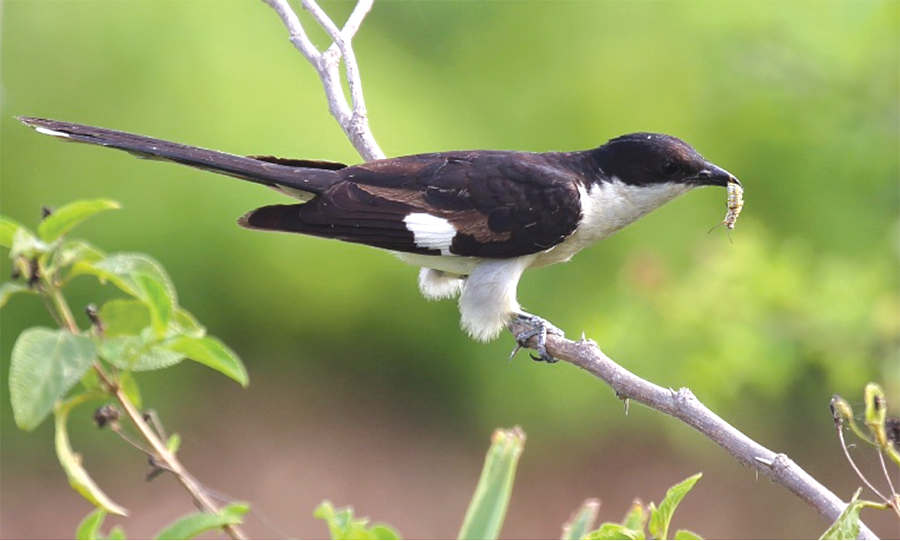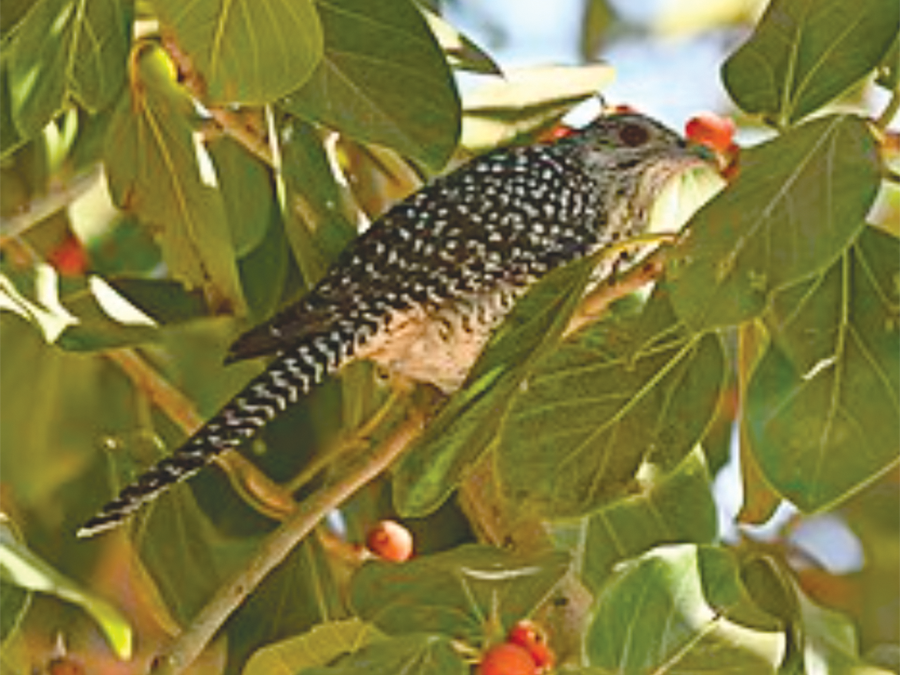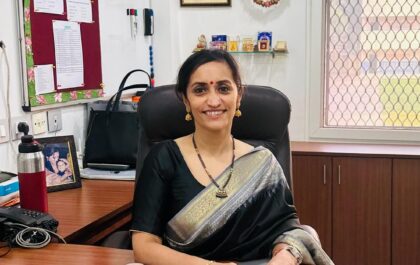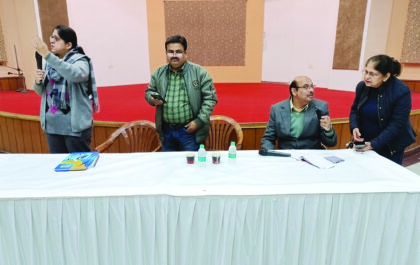Like every year, we receive rain with a mixed set of emotions. From wide-ranging fears about water logging and traffic jams to the expectations of emerald green spreading everywhere and
croaks of frogs and peeyuu peeyuu of the peafowls, rains bring life to almost everything in nature. Peafowls develop their spectacularly shimmery indigo, green tails that they fan into their widely loved display to impress the females. This is the season to spot common birds around our parks like Asian Koels, Brown-headed Barbets, Ashy Prinias, Red-vented and Red-whiskered Bulbuls.
Let’s shine the spotlight on our cuckoos. Male Koel is a dark black bird and typically sings the famous co-ooo, co-ooo from the top of a tree, just hidden under the top canopy, while female Koels are spotted brown all over and easily mistaken for a different bird. Koels are brood parasites like many other cuckoos. Female Koel lays eggs in another bird’s nest, commonly a crow’s nest when the owner is not looking. You must have heard a shrieking kikikiki these days, which is a female Koel calling as it is chased away by a crow, when it spots the intruder.
While Koels are more commonly seen and associated with monsoons, there’s another beautiful cuckoo, the Pied cuckoo or Jacobin cuckoo that arrives in monsoons in our area. In mythology, it’s referred to as chataka (Sanskrit: ????) , represented as a bird that waits for rains to quench its thirst. This black and white bird (Pied means black and white) calls piu-piu incessantly and is considered a harbinger of monsoon. It passes through our region on its annual migration journey to S.Africa.
by Soma Ateesh Tripathi (WW 17, Ground Floor, 98104 15483)


Popular Stories
Remarkable Mona Tuli Buddhiraja – Jewel Of Green Park
The Mystry Of Missing Porta Cabin
Lift in SDF 3C is Now Fully Operational!
Samvada Annual Editors Meet: A Resounding Success
Dog Owners Need To Be Educated
Municipal Corporation Of Delhi Makes Geo-Tagging Of Properties Mandatory
Recent Stories from Nearby
- Dr. Sahdev Ratra (1929-2024) Amongst The Senior Most, Bids Adieu May 9, 2024
- AIKGA Unit 42 May 9, 2024
- Sanjay Goes to All 22 Single Seniors Every Sundat May 9, 2024
- Food Distribution May 9, 2024
- Navratri and Welcoming Ram Lalla on Navami At Princeton May 9, 2024





